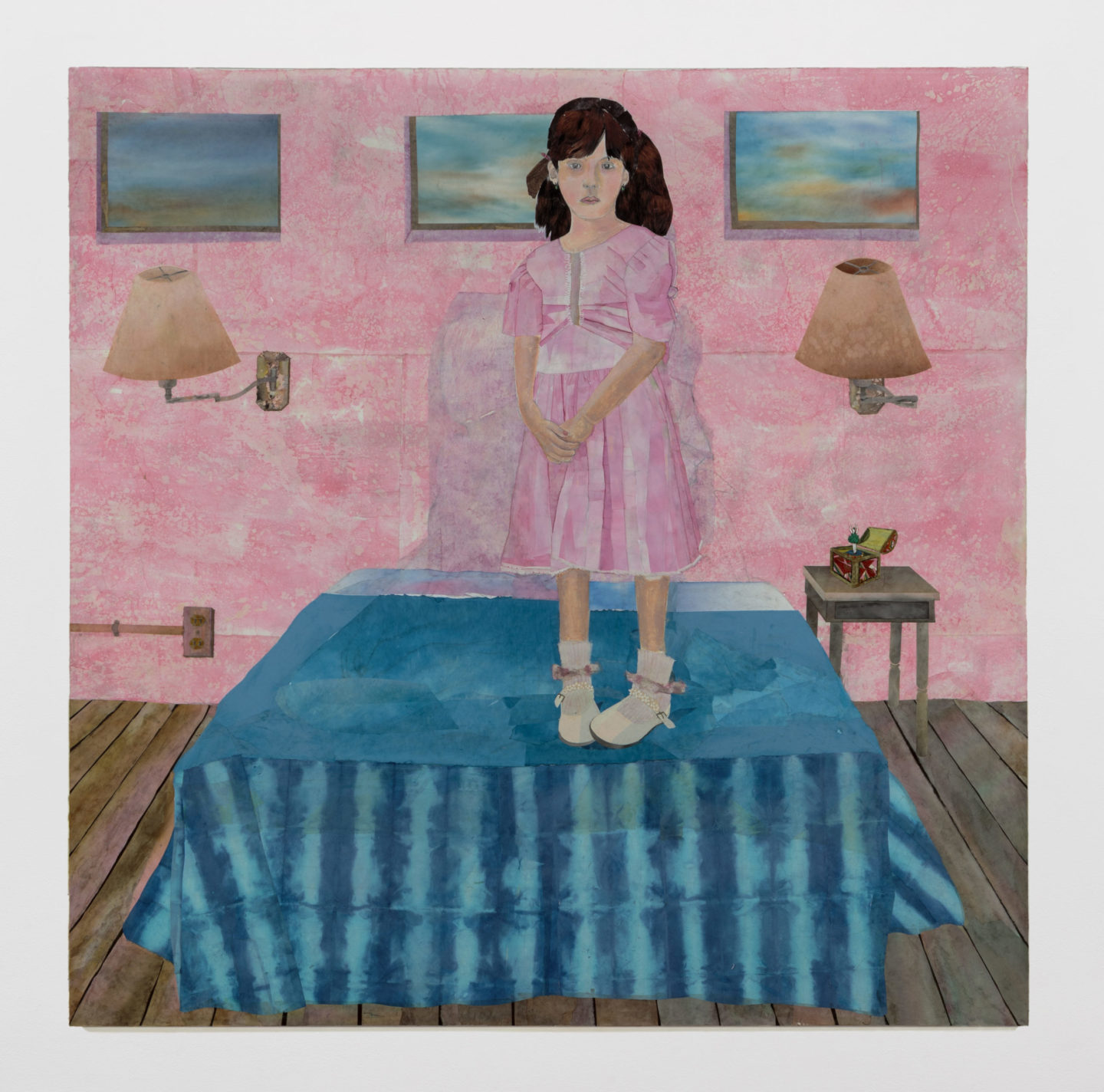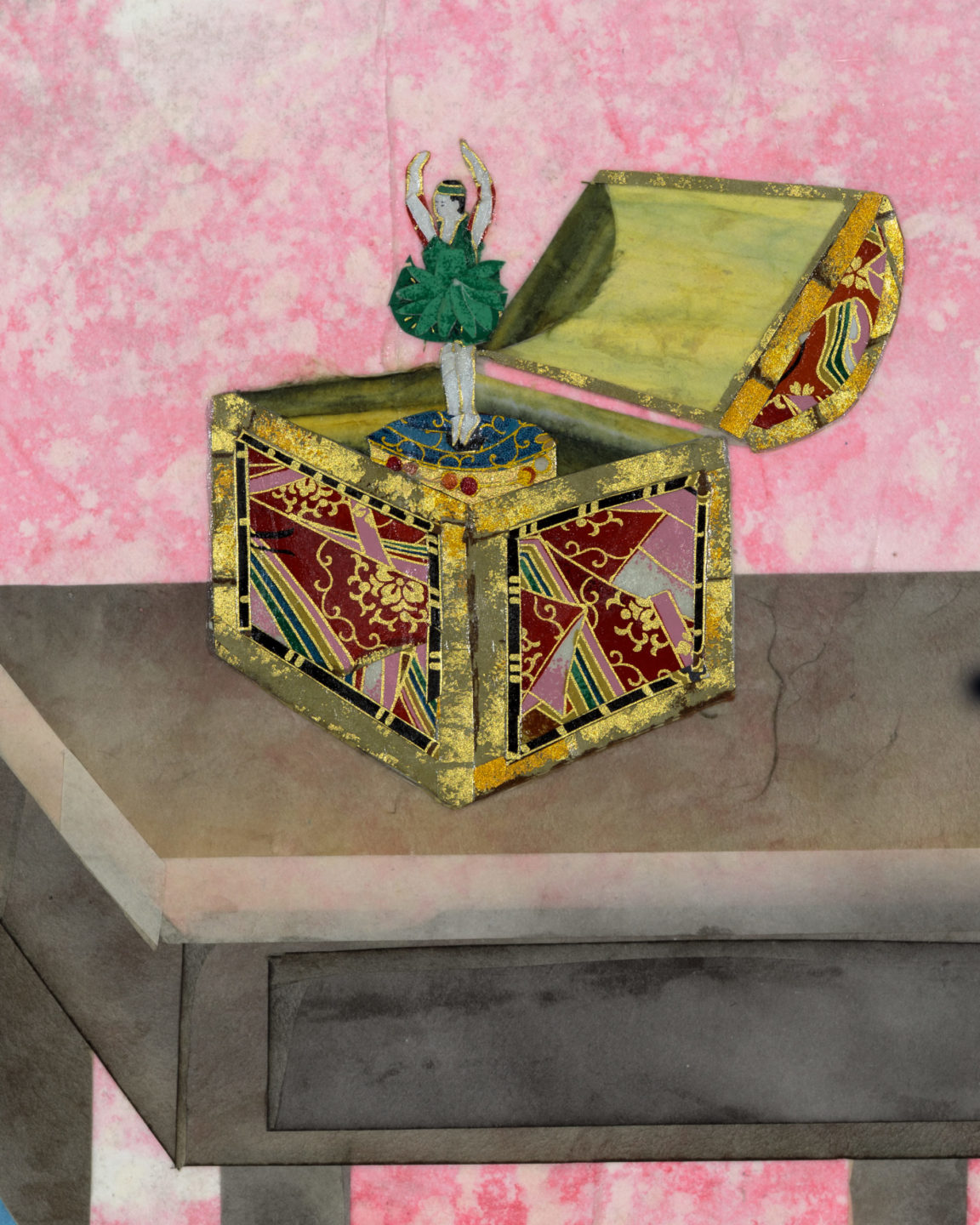María Berrío Ananda Tandava 2020
Collage with Japanese paper, watercolour paint, and coloured pencils on canvas
213.4 x 213.4 cm
84 x 84 in
Ananda Tandava, 2020, initiates a series of works that explore the silence that follows in the wake of a catastrophe, the modes of resilience and adaptation that arise alongside the crushing devastation of loss. This theme takes shape through Berrío’s narration of a small Colombian fishing village that has undergone a tragedy. In these works, Berrío explores how the formation of historical memory occurs amidst processes of grieving in a village that maps the site of her own imagination. The scenes in her large-scale paintings depict the barren homes and landscapes that situate the women and children left behind after the catastrophe.
In this painting, a girl stands perched on her bed. A music box sits on the nightstand to her left. Alone in her room, the girl is in the process of creating her own imaginary universe, as any child left to her own devices might do. Within the confines of her pink room, she dances out the rhythms of her own inner world. These dances follow the rhythms of the Hindu god Shiva, who dances the Ananda Tandava (the dance of bliss), through which the universe is formed, maintained, and then destroyed. The Ananda Tandava is a cosmic dance whereby the entirety of existence, from birth to end, is articulated by the choreographed movements of the divine dancer. The three paintings that hang on the wall behind the girl symbolise the new heavens that she is in the process of dancing into existence.
The girl comes from an imaginary village racked by tragedy, where people are held in a state of grief; when the girl enters her room, the world of grief and loss is held at bay by the confines of its walls. Within these walls the girl can practice her own cosmic dance, allowing imaginary universes to blossom and wither by her own movements. The room is not merely a refuge but a stage in which the girl acts out the drama of creation; it is a place of world-making. Here, she is the divine creator, the originator of an imaginary world that exists apart from the pain and suffering outside.
The girl’s music box is the vessel for the worlds she creates. When opened, a world is created; when closed, it is destroyed. A music box is also a vessel for the memories that remain with a child throughout her life. Its song will always remind her of her childhood, of the moments alone in her room, away from the noise or fear of the outside world, when she was the only one capable of creating her own reality. – María Berrío, 2020
María Berrío’s work is in permanent collections including the Whitney Museum of American Art, New York, USA; National Gallery of Art, Washington DC; Crystal Bridges Museum of American Art, USA; Nasher Museum of Art at Duke University, USA; Pérez Art Museum, Miami, USA and Pennsylvania Academy of the Fine Arts, Philadelphia, USA, among others. Her work has been shown as part of significant exhibitions at the Philadelphia Museum of Art, USA; Nasher Museum of Art, USA; Prospect.4 Triennial, New Orleans; and the Museo del Barrio, New York. The Norton Museum of Art in West Palm Beach, is organising the first survey of Berrío’s work, scheduled to open in early 2021.
© María Berrío
Courtesy the artist and Victoria Miro



